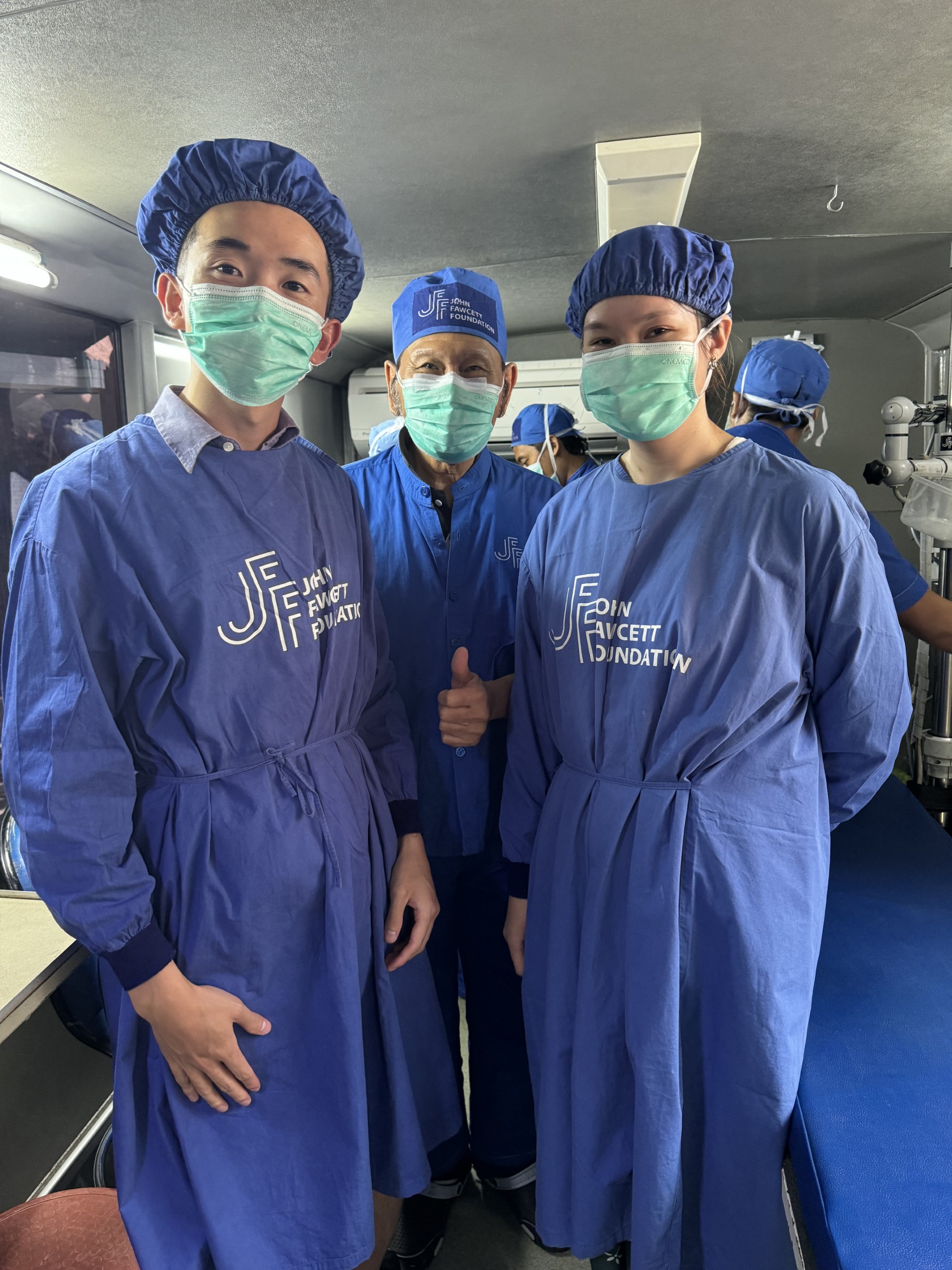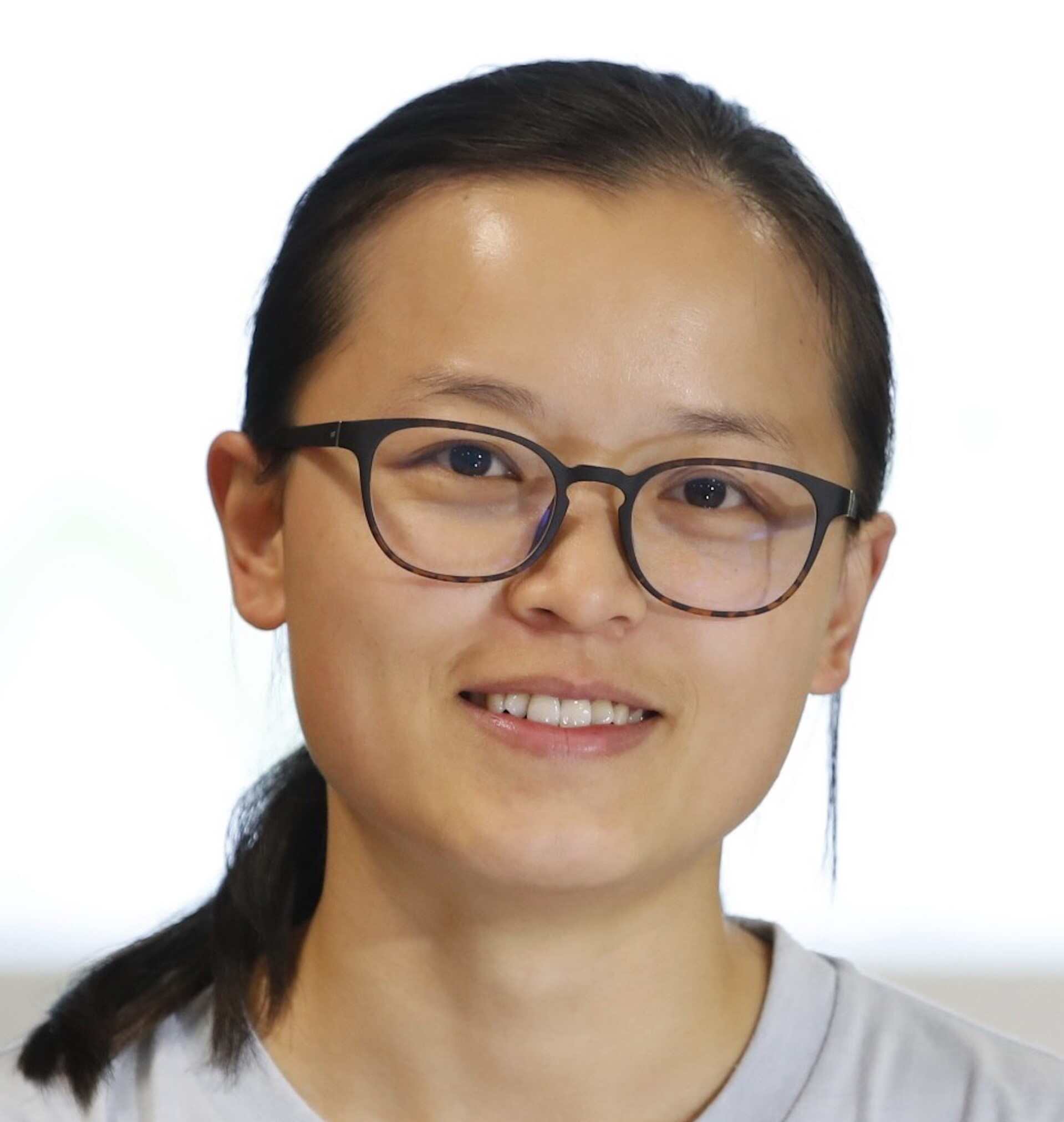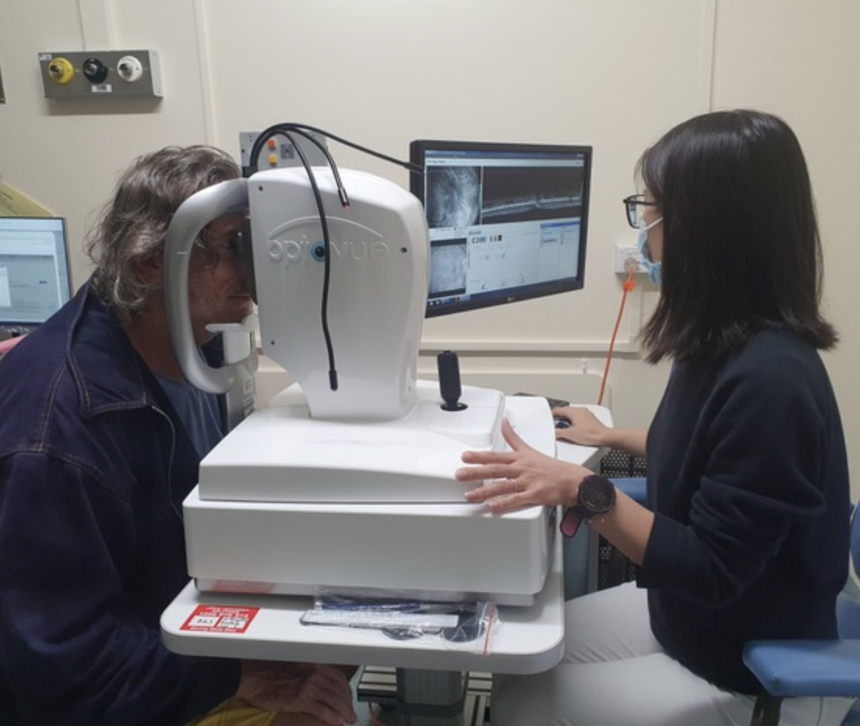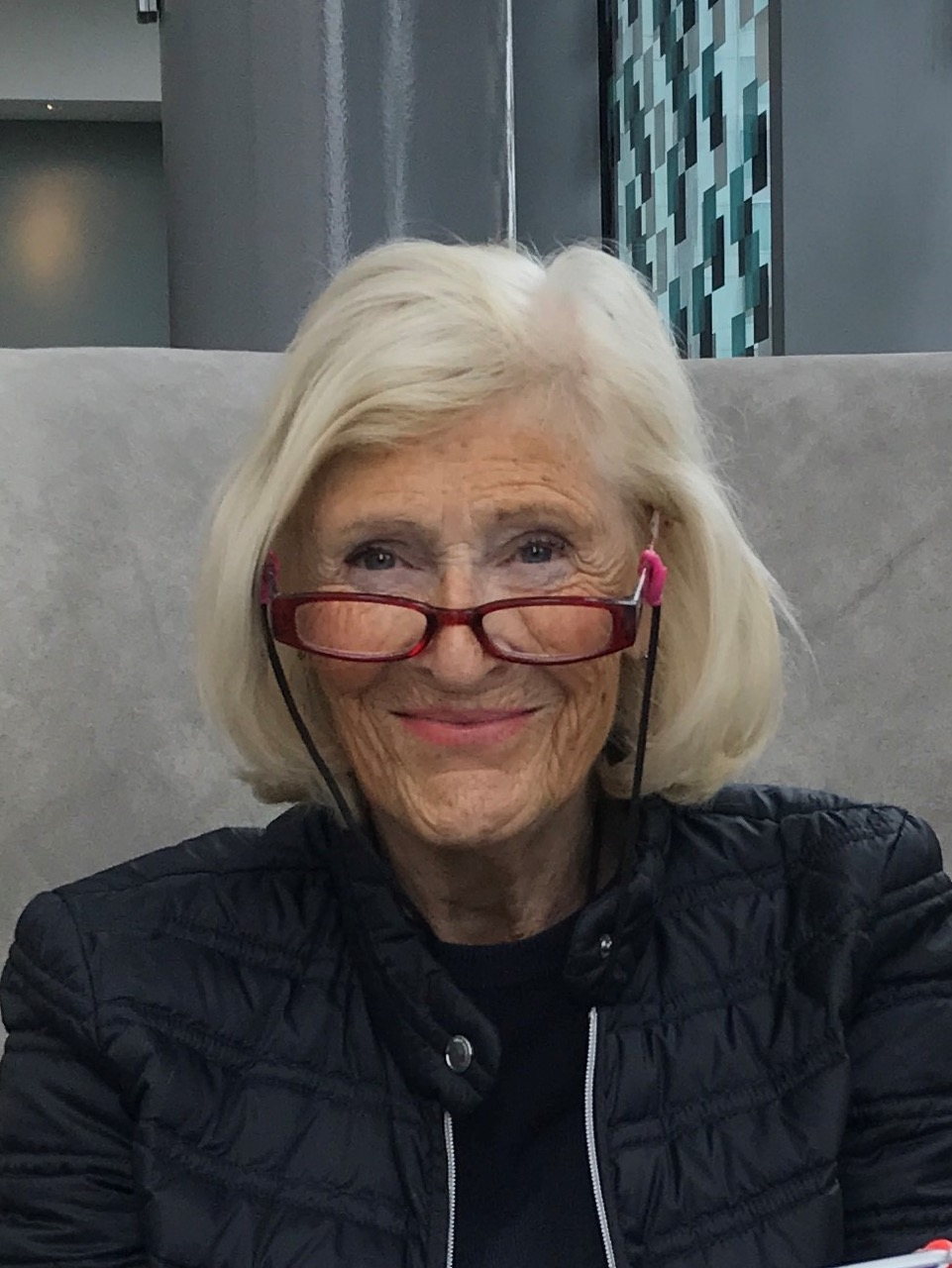

Current Projects
We are excited to be supporting these projects.

Ophthalmology subspecialty workforce analysis in Western Australia
Deepaysh Dutt, Marshall Makate, Joos Myer and Josephine Richards
Curtin University
Our project aims to calculate the rates of current and projected service provision and service needs for ophthalmology subspecialties and characterise the distribution of this across rural and metropolitan WA. Ophthalmologists across WA will be surveyed on their current practice. This data, along with WA population data will be used to construct a health economics model. The findings of this study will be essential in informing policy and fellowship incentives to address subspecialty shortages.
Preservation of sight in Southern Zimbabwe
Debbie Hughes and Sandra Peroni
Cosmos Alliance
Sponsorship of two Australian ophthalmic nurses to better enable, equip and empower their counterparts in Zimbabwe. In an international collaboration, the nurses will assist US ophthalmologist Steve Beaty in identifying and exploring initiatives to expand limited ophthalmic care currently provided in Bulawayo’. Sandra and Debbie are passionate about ensuring ‘the gift of sight is cherished and preserved’ for all. They will join mobile eye clinics, provide education, and assist with improved productivity within several hospitals.

‘JFF CREATE’ ‐ a new volunteering initiative that empowers Australian and Indonesian junior doctors to fight global blindness
Dr Qiang Li and Dr Elaine Ong
John Fawcett Foundation
Junior doctors interested in making a difference to global health may often be discouraged by a lack of experience or expertise, particularly in a highly specialised field like ophthalmology. This prompted Qiang Li and Elaine Ong to establish the John Fawcett Foundation ‘CREATE’ Program (JFF CREATE), a new volunteering initiative that inspires like-minded Australian and Indonesian junior doctors to fight global blindness through six fundamental endeavours: Charity, Research, Exchange, Awareness-building, Tutelage, and Empowerment.

Characterising Stargardt Disease Mutations for Splice Intervention Therapeutics
Dr Di Huang
Retina Australia
This project aims to find a treatment for Stargardt disease (STGD1), a genetic eye condition caused by mutations in the ABCA4 gene. The researchers will study specific genetic changes in ABCA4 that lead to the disease and aim to develop a type of treatment called spliceswitching antisense oligonucleotides (SS‐AONs). These SS‐AONs are like temporary “modifiers” for the gene and can be used to fix the gene’s behaviour at the level of its messengers (mRNA) without making permanent DNA changes.

Addressing ocular trauma in Western Australia through improved understanding of epidemiology and targeted health promotion
Dr Qiang Li
Lions Outback Vision
Eye injuries are a leading cause of blindness and impaired quality of life globally. In Australia, over 10,000 people are hospitalised each year due to eye injuries costing the healthcare system $1.89 billion (AUD) annually. Children, rural residents and First Nations people are especially vulnerable. For this project, we will 1) research why certain demographics are more vulnerable to eye injuries and their devastating consequences, and 2) develop an evidence-based preventive program for dissemination in Western Australia. The desired outcome of our project is to minimise the impact of eye injuries on Western Australians’ health.

Improving Eye Health Knowledge in Western Australia
Dr Jason Charng, Judy Hatswell
The University of Western Australia
Eye health promotion is a priority area identified in the Perth Eye Foundation Vision Health Report. Leveraging Sight For All expertise, this PhD project will first gauge the eye health literacy of Western Australians, followed by delivering a tailored set of materials designed to improve eye health literacy, with a specific focus on at‐risk population groups.

Artificial intelligence models for diagnosing infections in the cornea
Dr Maria Cabrera-Aguas
The University of Sydney, Save Sight Institute
This study will create a corneal infection image database (AusKeratitisID) for subsequent training and evaluation of a type of artificial intelligence, deep learning models, with clinical data for automated image-based differentiation of bacterial, fungal and viral keratitis to assist in the rapid diagnosis to prevent vision loss.

Dexamethasone In Orbital Cellulitis (DOC) Trial
Dr Jessica Tong, Dr Krishna Tumuluri, Dr Thomas Hardy, Prof Dinesh Selva
South Australian Institute of Ophthalmology
Paediatric orbital cellulitis is a serious condition with significant morbidity and mortality. Corticosteroids may reduce soft tissue inflammation and hasten clinical recovery. However, it may also mask or facilitate progression of infection. It remains unclear if corticosteroids should be used for orbital cellulitis and it has not become standard of care. Our study will be the first randomised controlled trial worldwide to determine the role of corticosteroids in orbital cellulitis in reducing complications and length of hospitalisation. We will conduct a multi-centre double-blinded randomised controlled trial in children. Enrolled participants will be randomised to receive either intravenous dexamethasone or placebo (normal saline). Primarily, we will determine if corticosteroids will shorten the duration of hospital admission time. Secondary outcomes to be assessed will be the number of surgical interventions required and visual outcomes. Follow-up time will be 6 months.

Profiling the choroidal genetics to determine its role in myopia and myopic macular degeneration
Dr Samantha Lee, Prof David Mackay AO, Prof Jeremy Guggenheim, A/Prof Puya Gharahkhani, Dr David Alonso-Caneiro, Prof Scott Read
Lions Eye Institute, University of Western Australia
The choroid is a structure at the back of the eyes that supplies nutrients to our light-sensitive cells. Changes to the choroid have been noted in people with short-sightedness or potentially-blinding conditions such as macular degeneration. By identifying the genes responsible for changes in the choroid, my research will determine whether these changes directly lead to these eye conditions. This will enable future development of new treatments for these choroid-related disorders.

Comparison of macro and micro vascular changes in diabetic patients
Prof. Tim Davis
Fremantle Hospital
Analysis of carotid artery function using ultrasound, and retinal circulation using optical coherence tomography angiography (OCTA), will determine whether subjects with early diabetic retinopathy are more likely to develop carotid disease and vice versa.

Helen Smith Award
Helen was the founding CEO of the Perth Eye Hospital (PEH) in 1990, and also served as board member of the Eye Surgery Foundation (ESF) charity, in 2020 the ESF emerged into the Perth Eye Foundation (PEF).
Helen’s leadership was enormously instrumental to the success of both organisations and is now recognised by naming the major grant each year as the Helen Smith Award.
Winners
Australian Vision Research enterprise grant.
Project Archives
Perth Eye Foundation or its predecessor the Eye Surgery Foundation has partnered with a diverse range of organisations to improve eye health outcomes in Australia and beyond.
These include:
- RANZCO WA branch for visiting speakers
- The Ophthalmic Research Institute of Australia
- The RANZCO Eye Foundation
- Glaucoma Australia
- Lions Eye Institute
- Lions Outback Vision
- The Association for the Blind in WA
- The John Fawcett Foundation in Indonesia
- The St John Eye Hospital in Jerusalem
- The East Timor Eye Program in conjunction with the Royal Australian College of Surgeons
